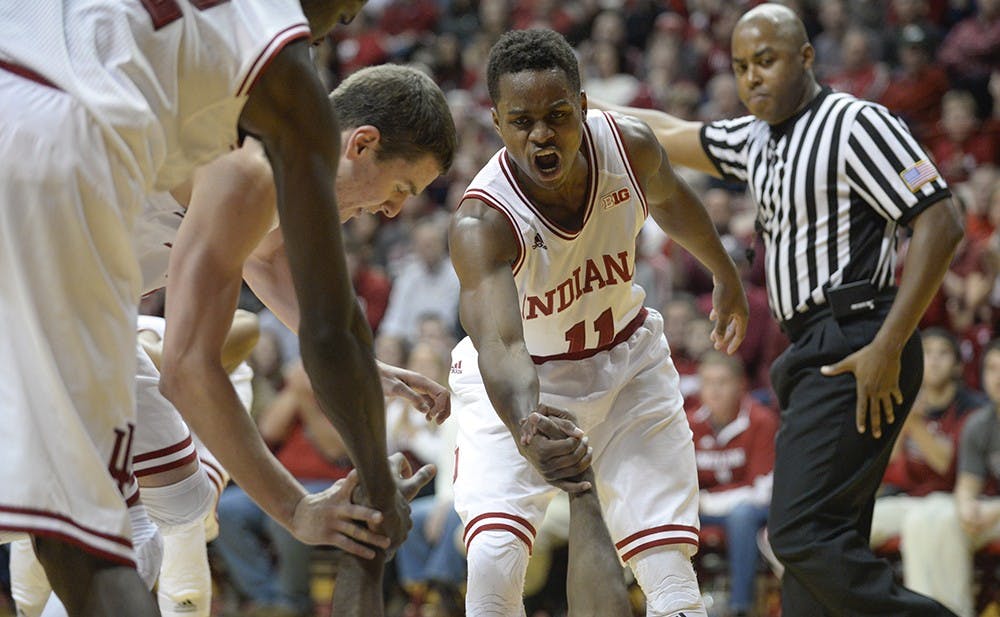Behind the schemes and statistics, the objective is easy: hit your shots and score points. Score more points than the other team, and you win. Guaranteed. Every time.
IU’s ridden that simple mindset to a 6-1 start this season. The Hoosiers are scoring 87.4 points per game, good for No. 7 in the country and best in the Big Ten. They’re shooting almost 52 percent from the field and 43 percent from 3-point range, pouring in more than nine 3-pointers a game.
The Hoosiers know how to score. They have to — IU ranks last in the Big Ten in scoring defense, No. 7 in rebounding margin and No. 13 in average height. Offensive production is the only facet of the game at which IU is above average this season.
It may be overly simplistic to boil success on the court down to scoring, but IU’s success in recent seasons has been directly linked to offensive production.
In 2011-12, the first of IU’s back-to-back Sweet 16 runs, the Hoosiers ranked No. 18 nationally in scoring. In 2012-13, IU was No. 3 nationally. It won 56 games in those two seasons.
Scoring plummeted in IU’s 2013-14 campaign, with the Hoosiers ranked No. 132 nationally. IU finished 17-15 and missed postseason play.
This season, IU has scored almost at will. In ?interviews, Crean has spoken infrequently of his team’s offensive performance.
“Offensively we can get shots,” Crean said. “Our ball is moving.”
A roster full of natural scorers has the offense taken care of. It’s the other phases that have given IU fits.
“I hate the term ‘work in progress,’ but I really don’t have a better one for where we’re at,” Crean said.
The defense shouldn’t be tested against Savannah State, which ranks as the seventh worst offensive team in the country, according to kenpom.com . The Tigers are just three games removed from an 87-26 loss to Louisville on Nov. 24.
IU’s biggest defensive deficiency, other than a pure lack of size, comes from long range. The Hoosiers have allowed opponents to connect on 34.3 percent of their 3-point attempts this season. It’s a stark departure from IU’s stingy 3-point defense last season, when opponents converted just 29.9 percent.
Crean said the defensive struggles come down to coaching communication.
“I’ve got to take full responsibility,” he said. “It’s not on the assistants, on nobody else but me to get our communication right. And whatever that’s going to take, we’re going to have to get that right because all it is is calling out who you have and calling out when you switch and calling out when we switch a defense.
“We have to get it fixed quickly.”




